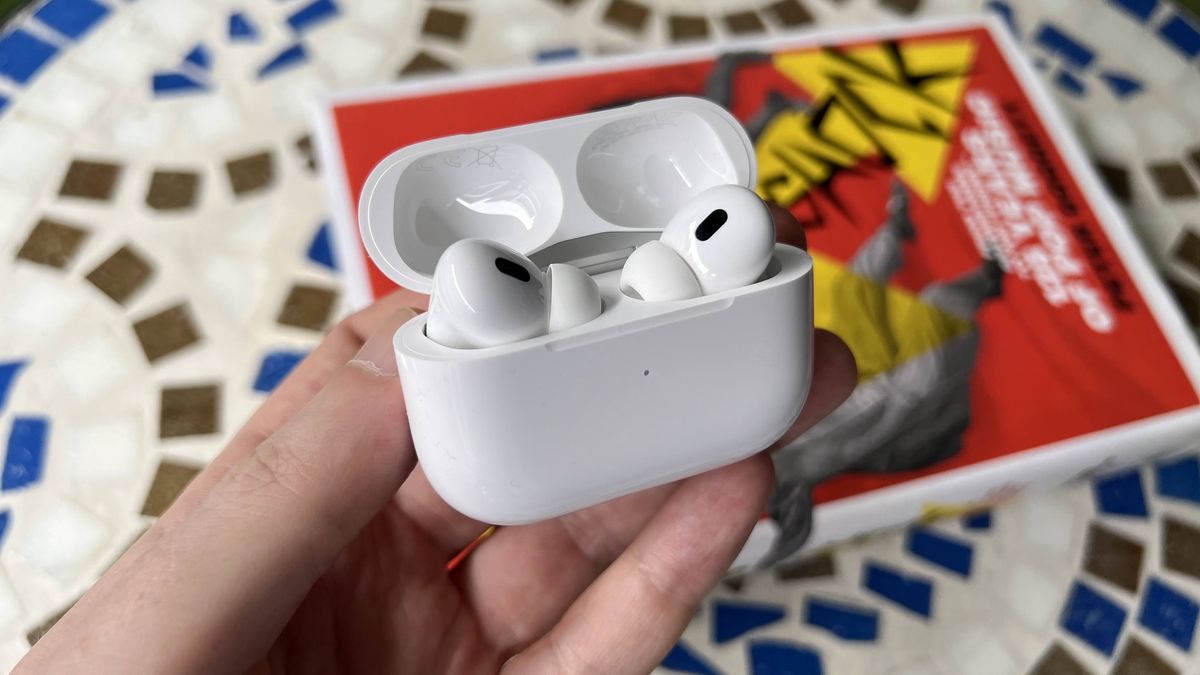You can’t jump on a plane, sit in a coffee shop, or hit the trek trail without seeing Apple’s trademark AirPod or AirPod Pro white stems poking out of someone’s ears. Though it was late to the true-wireless earbuds market, Apple has definitely been the most successful — and as you’ll see in our AirPods Pro 2 review here, it’s looking to extend that lead.
Best-selling doesn’t necessarily mean best overall though. Take the AirPods 3 or the first-gen AirPods Pro: expensive and serving best those invested in the Apple ecosystem already, the lineup of rivals is intimidating and capable, with budget entries punching far above their price points and premium models offering superb audio and noise cancellation.
But with the AirPods Pro 2, Apple finally hits the high notes. With improved audio performance and much better battery life, a richer feature list, and pin-drop-silent noise cancellation, the AirPods Pro 2 really sing. Check out our full, comprehensive review below.
AirPods Pro 2: Price and availability
Revealed alongside the iPhone 14 and iPhone 14 Pro, AirPods Pro 2 are available now and will cost you $249 in the U.S., and £249 in the U.K.
In the U.S., that’s admirably the same price as the 2019 original AirPods Pro, and a small increase of £10 in the U.K.
The AirPods Pro 2 remain on the more expensive side of the true-wireless earbud market, but maintaining near-identical pricing for these improved successor models during a challenging economic climate is as surprising as it is appreciated.
The release of the new model inevitably mean the original AirPods Pro are coming down in price. They remain a solid option, especially if you can get a good deal on them. But as this review will explain, the upgrade here is significant enough to make the new AirPods Pro 2 the first choice for those that can afford them.
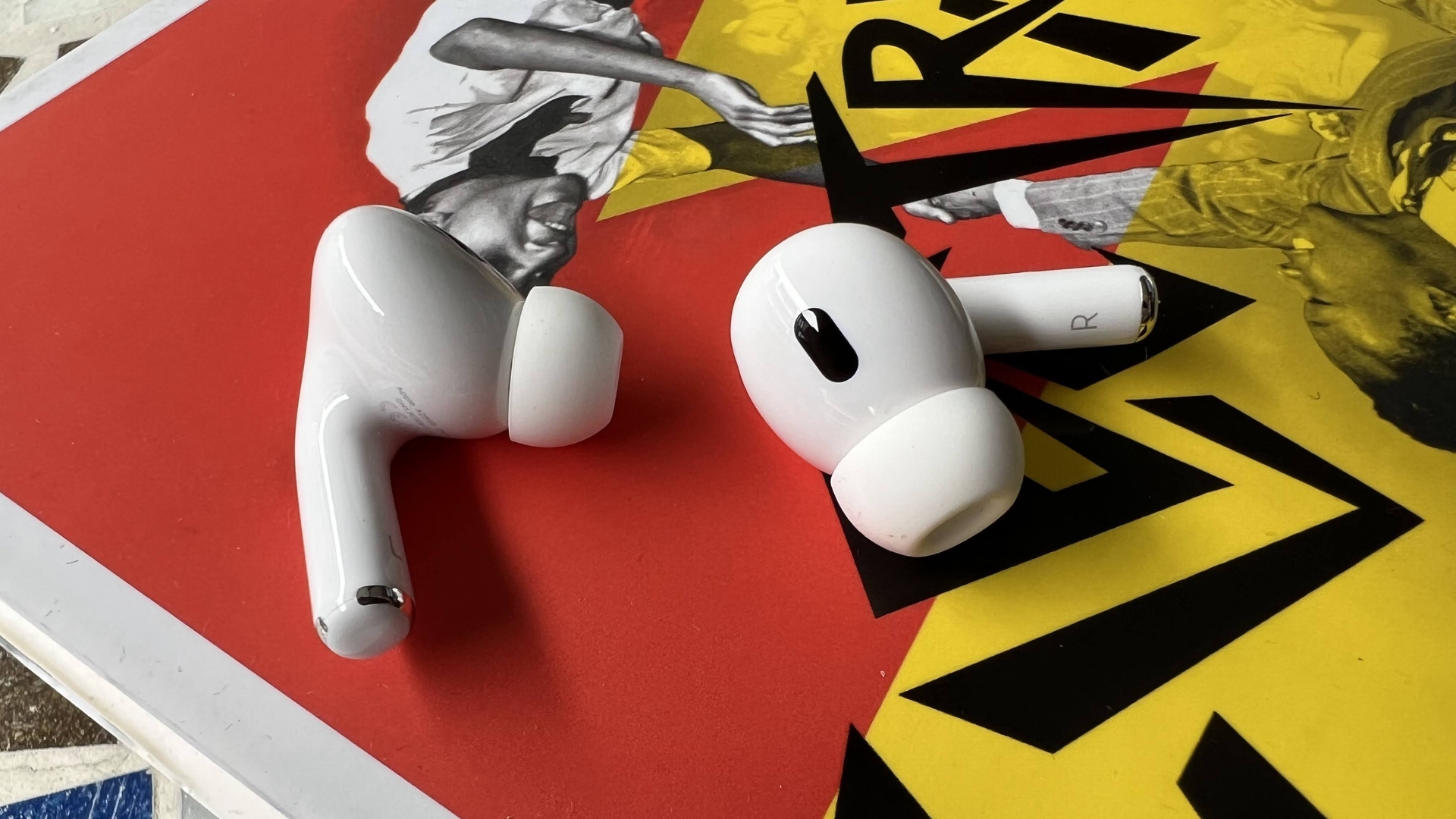
AirPods Pro 2: Design
You’ll have to do a double take to spot the differences between the AirPods Pro 2 and the original AirPods Pro — a few minor changes aside, they’re incredibly similar in design, at least externally.
Compared to other true-wireless earbuds and Apple’s own standard AirPods, the white-gloss AirPods Pro 2 earphones feature shorter stems and a slightly chunkier case.
The buds themselves see a few notable additions. Firstly, there are finally on-bud volume controls. A touch-sensitive section of the stem can now be swiped to adjust volume levels in increments, signified by a tactile click sound to indicate the change. It works well enough, but we’d appreciate some more customization options here to dictate the sensitivity of volume steps – it all changes too slowly for me.
You can still squeeze the stem to control music and noise cancellation modes through combos of double-taps and holds, and this works well, provided you can remember what each shortcut control does.
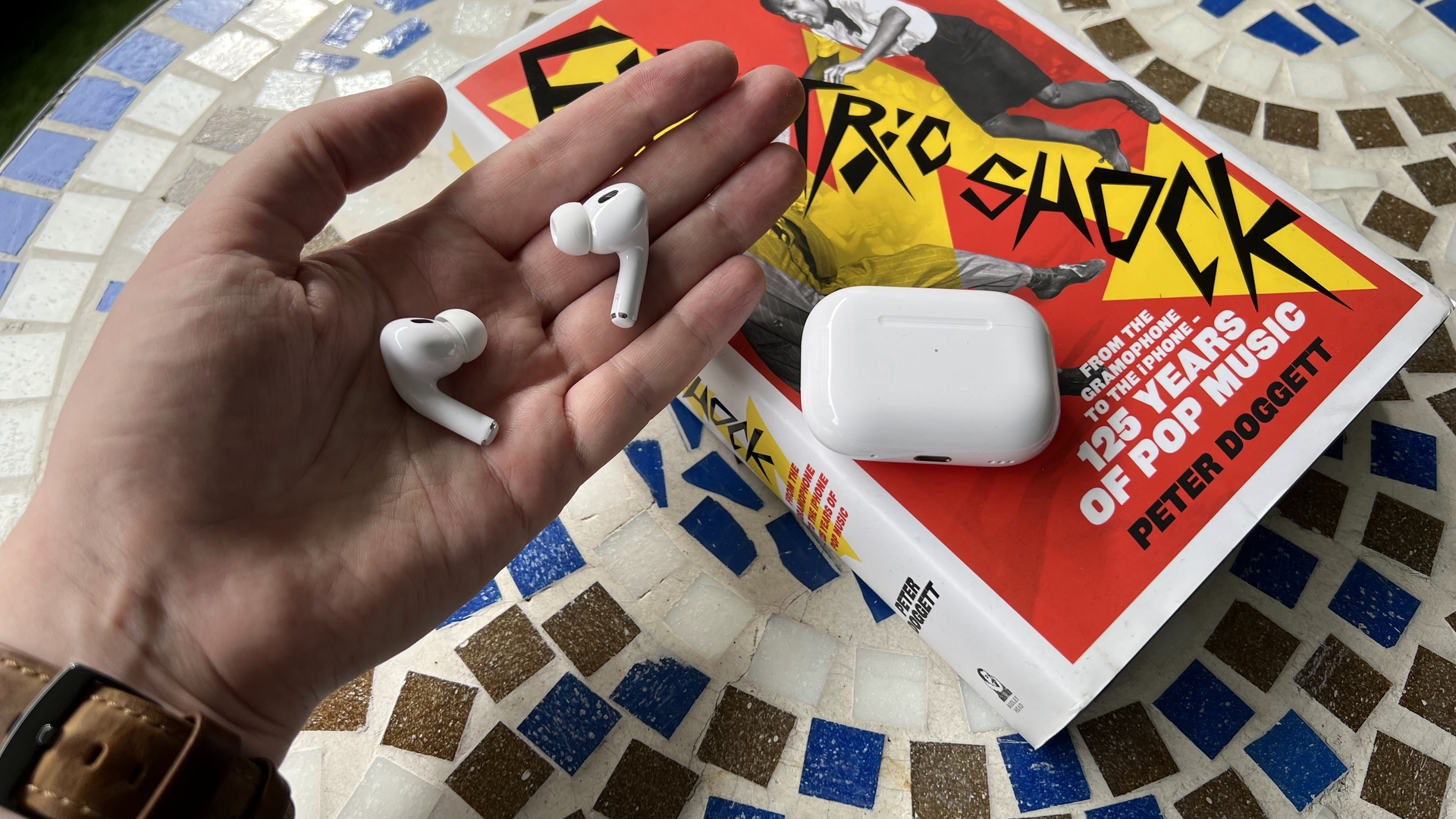
A definite improvement, however, is a new skin-detection sensor, replacing the proximity sensor of the last-generation buds. These are used to make sure the AirPods Pro 2 buds know they are in your ears — pausing music when a bud is taken out, for instance, and making sure they’re accurately in place before activating noise-canceling functions.
Apple’s H2 chip offers improved efficiency for the battery, and can compute much faster thanks to double the transistor count over H1.
On the original AirPods Pro, I found the proximity sensor to be erratic when deciding whether the buds were in my ears correctly, making activating the noise-canceling options finicky. But that problem has been cleared up entirely by the more-accurate skin sensor. You’ll also find that the acoustic vent, used by the noise cancellation system to monitor incoming sounds, is now moved to a more prominent outward position for better capturing ambient audio.
For the most part, the comfort levels of the AirPods Pro 2 are in line with that of the original AirPods Pro. With larger, heavier buds than the standard AirPods, they’re a tighter fit for smaller ears, but the stem-based design is still preferable compared to, say, the bud-only design of Sony’s leading WF-1000XM4. They balance well in the ear and can be used for long stretches without causing fatigue. Apple makes a concession to those with smaller ears among us this year with the inclusion of a new “X.S.” ear tip option in the box. You’re looking at 5.4g of weight per bud.
Internal changes may not be visible but are arguably just as important. The earbuds now use Apple’s H2 chip, which offers improved efficiency for the battery and can compute much faster thanks to double the transistor count over H1. This leads to improvements in noise cancellation abilities and an overall more consistent audio experience.
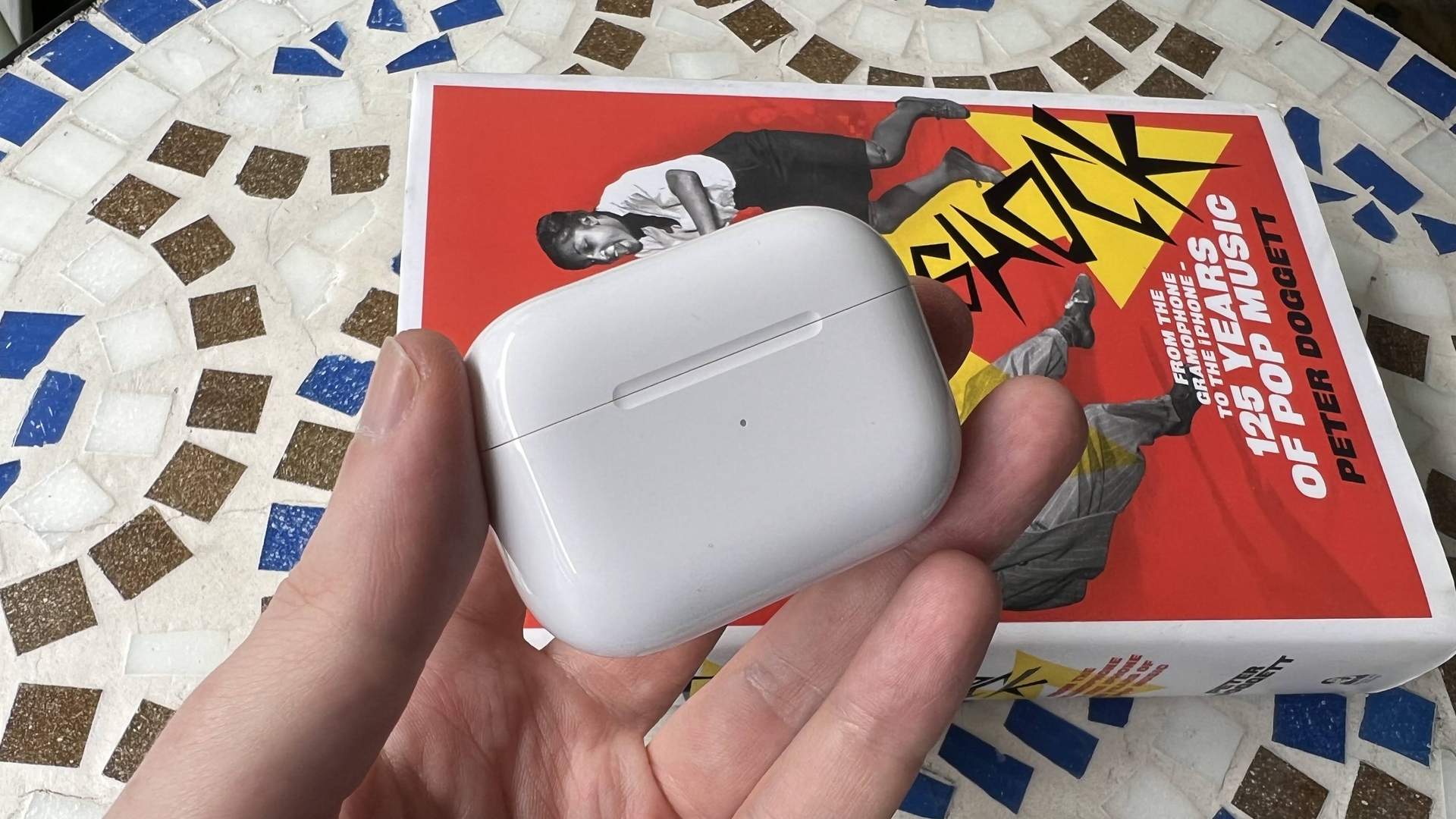
Onto the case, and it’s marginally bigger than its predecessor, measuring 45.2mm x 60.6mm x 21.7mm, and weighing 45.6g. Offering a Lightning port and MagSafe wireless charging (and now compatible with the Apple Watch charging puck), the case provides a one-two component combo of Apple’s U1 chip and an inbuilt speaker.
They work in unison to power the new “Find My” feature, offering precision location awareness to trigger a chime from the case should it become lost. That speaker also beeps when charging if the battery is low (a new feature, a cute little audio cue to buds are charging successfully) or the buds are popped back in the case, and the lid is closed.
Rounding off the cast of additions is a lanyard loop hoop, letting you attach the case to a cord or bag. Sweat and water resistance to an IPX4 rating returns (we’d still definitely avoid submerging the case in water), while you can also still have the case engraved at purchase – which will now be visually reflected in the accompanying software system settings.
AirPods Pro 2: Features
The improvements to the AirPods Pro 2’s core feature set impress the most, giving the premium buds their edge.
Active noise-canceling features of the AirPods Pro were solid but couldn’t match what was offered by Sony and Bose. With the AirPods Pro 2, however, there is a significant improvement to the amount of external audio blocked by the earbuds, letting you enjoy your tunes, audiobooks, or podcasts without external interruptions. Apple claims that the noise-canceling is twice as effective as the previous model — that’s a tough metric to verify, but anecdotally that feels reasonable.
As my Apple Watch explainer detailed, my commute to the office is very noisy, but the noise-canceling feature here eliminates the screaming of the tube carriage almost entirely once the music is playing.

It extends to call quality too. The mics onboard here are sensitive and responsive, and pals taking incoming calls from the AirPods Pro 2 told me that audio was clear and removed from much of the external ambient sound that could feasibly have been picked up.
Transparency mode is the exact opposite of the noise-canceling mode, using the onboard microphones to amplify external sounds pumped into your ears so that you can hear them clearly without taking the buds out. It’s a mode present on the original Pros, but it works slightly differently.
Spatial Audio is a far more convincing and encompassing effect with the AirPods Pro 2
Transparency mode is now “adaptive,” meaning that it’ll dial down the volume should you encounter a sudden spike in external sound to avoid deafening you – say, the unexpected siren from an oncoming ambulance. It’s a great idea in theory, but I’d argue it’s not adaptive enough. It’s capable of spotting and protecting against super-loud sounds like traffic and construction work, but it isn’t as capable of filtering out comparatively-loud indoor sounds, for instance, the noise from a vacuum cleaner.
That should all change soon though with a new update that will focus on blocking out noise you don’t want to hear, while letting the noise you do want to hear in. It’s a kind of noise canceling and transparency mode, with the headphones able to focus on both unwanted and needed noise. For instance, it could mean focusing on voices while blocking out traffic noises.
Apple calls the feature ‘Adaptive Audio’ with a series of tweaks changing how things work, all via a software update so there’s no need to buy a new pair.
The update also adds Personalized volume which uses machine learning to adjust volume depending on the environment you find yourself. It’s all set to arrive in Fall 2023.
Were the AirPods Pro 2 capable of knowing your location, as the Sony WF-1000XM4 can, different volume thresholds could be set per location and improve the functionality here. Regardless, the core concept proves very responsive when dealing with the louder events, switching swiftly thanks to what Apple claims is a 48,000 times-per-second processing check.
Spatial audio is an acquired taste for many – I’m personally a convert, at least when it comes to albums that have been specifically remastered for the format, where the spacious soundstage lets you really pick apart the individual components of a track. It’s a far more convincing and encompassing effect with the AirPods Pro 2, thanks to a new setup process that lets you use your iPhone’s camera to personalize the audio based on your unique ear shape.
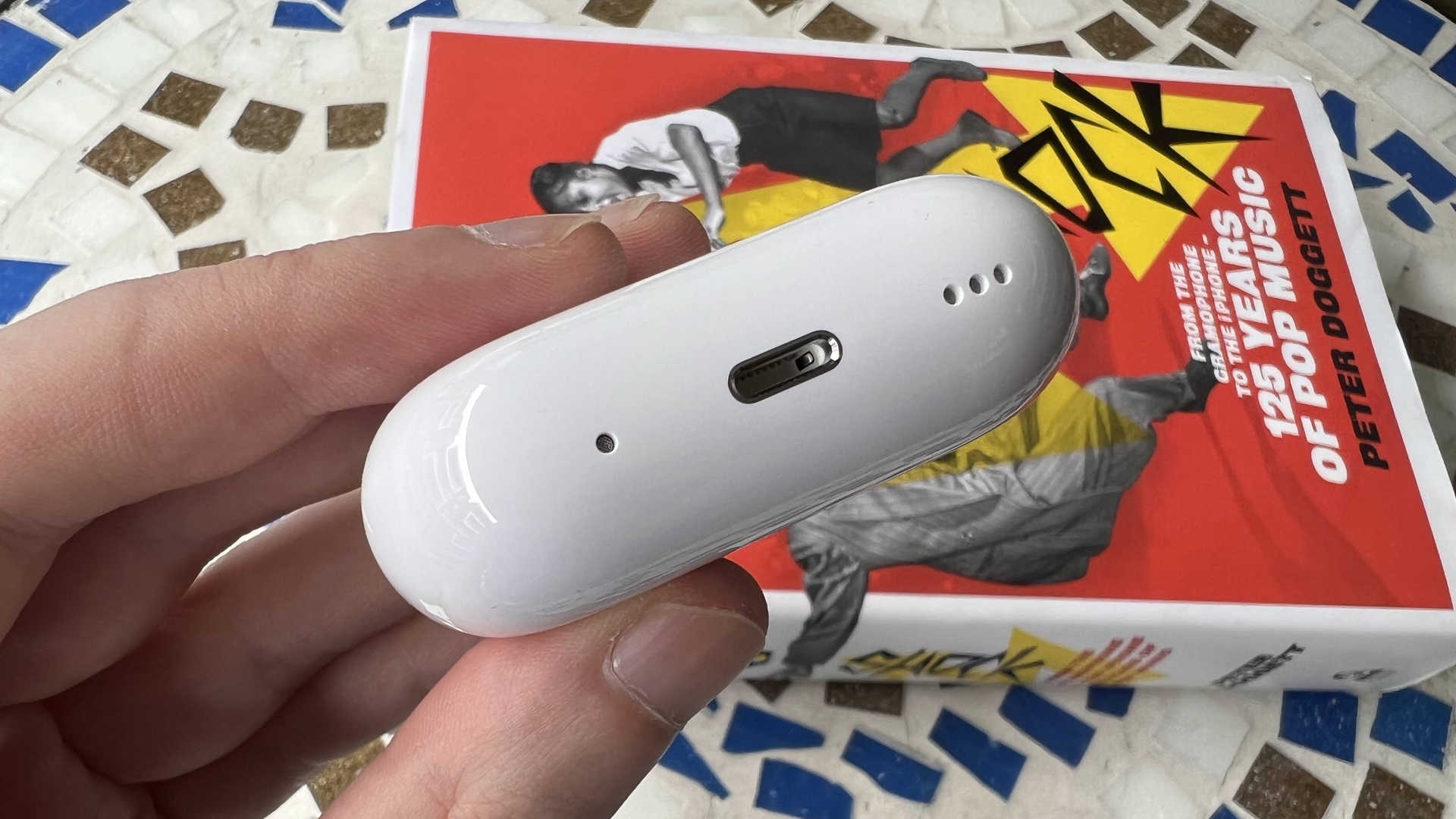
It’s worth a little more discussion of the Find My feature, too – that U1 chip is the same you’ll find in Apple’s AirTags, and you can use the same Find My app to track down a lost AirPods Pro 2 case. As well as the audio cues coming from the case, you’ll be able to follow an onscreen interface on the iPhone that points you in the right direction of the unit. AirPods are linked to your Apple ID account now too, which adds to your buds’ security, making them a little less attractive to would-be thieves. Provided you’re in Bluetooth range, you’ll be able to track down the individual buds if misplaced, too.
Finally, there’s now a dedicated iOS settings menu for the AirPods. It’s here you’ll get access to toggles for customizing the touch controls, personalized Spatial Audio options, or Ear Tip fit tests.
It’s this sort of attention to detail in terms of integration with the wider Apple ecosystem that is the AirPods line’s ace in the hole. Connectivity between the devices is seamless if you’ve got a Mac or Apple TV. You’ll receive prompts to switch devices automatically when the AirPods Pro 2 are recognized, for instance, without needing to re-pair across devices over and over.
AirPods Pro 2: Audio performance
Redesigned amplifiers and drivers in the AirPods Pro 2 deliver the best-sounding in-ears Apple has ever produced. Using the same 11mm drivers found in the third-gen AirPods, you’ve got a versatile tuning with a dynamism that presents itself well across musical genres and spoken word content. I’d say there’s definitely more width to high and low-end frequencies, with the AirPods Pro 2 adding a little more “oomph” to the bass response compared to their predecessors.
Time to hit a few of my favorite test tracks then. Bjork’s Hyperballad is always a great challenge for in-ear buds, weaving together sub-bass and samples, synth stabs, and processed decayed beats. The AirPods Pro 2 pulls it all together superbly, maintaining a warmth at the mid-range that can begin to feel synthetic on this track with lesser buds, and Bjork’s gymnastic vocals cut through with heart-breaking clarity.
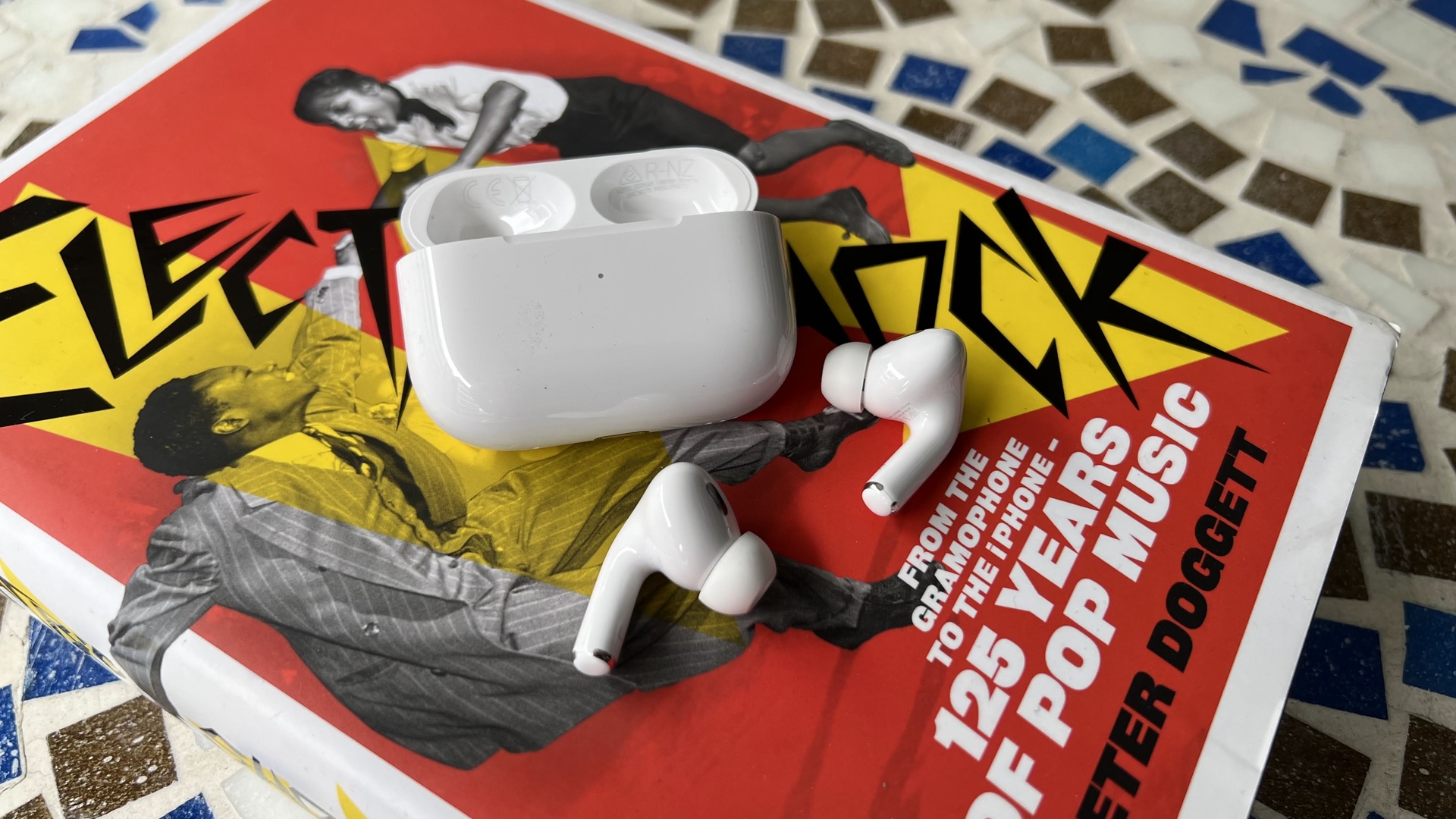
Over to something a bit more gentle, and Judee Sill’s delicate piano-led The Kiss is delivered with a haunting sense of presence to the stripped-back instrumentation – the soundstage convincingly separating out the component elements for analytical appreciation.
Apple’s top-of-the-line earbuds still can’t take full advantage of Apple Music’s Apple Lossless Audio Codec (ALAC) for that richest of playback detail.
Ramp things up with the crunch of Guns N’ Roses Nightrain, and you get a sense of how well the AirPods Pro 2 handle busier, crunchier rock, with Slash’s slick blues riffing screaming to the fore while the rhythm section booms and rolls behind, with space for that cant-help-but-love-it cowbell to cut through without undermining the sonic detail of that iconic lead guitar line.
I’ve found them particularly good for watching movies with, too. The Spatial Audio effect does put you in the middle of the action. Though it’s not quite a match yet for dedicated, discrete surround sound speakers, the feature on AirPods Pro 2 has allowed me to satisfyingly enjoy some late-night blockbuster movie sessions without waking the neighbors.
Those hoping to see the AirPods Pro 2 make the jump to lossless or high-resolution audio will have to wait a little longer. You’re stuck with the AAC codec and Bluetooth 5.3 here, which means Apple’s top-of-the-line earbuds still can’t take full advantage of Apple Music’s Apple Lossless Audio Codec (ALAC) for that richest of playback detail. That likely won’t bother Apple’s more casual target audience, but it’s one of those rare moments for the company when all the dots don’t join up. Playback remains detailed and enjoyable regardless, but it’s frustrating that the Holy Grail of wireless audio remains out of reach for the time being.
Still, it’s a good opportunity to delve into your past and present Apple Music replay mixes.
AirPods Pro 2: Battery life
It’s an across-the-board improvement on battery life on AirPods Pro 2, offering 6 hours per charge from the buds with noise-canceling switched on and 30 hours of battery life stored in the case, good for five recharges according to Apple.
That’s a fair estimation from our experience, but remember that using certain features and pumping up the volume can affect battery life. For instance, if you’re always using Spatial Audio, you can knock roughly an hour off the buds between charges. But should you run the AirPods Pro 2 buds dry, popping them in the case for just five minutes will get you about an hour’s worth of playback.
Compared to the competition, battery life here is strong but not quite class-leading – Cambridge Audio’s Melomania 1 Plus squeezes 9 hours out of its buds and pops an additional 36 hours into its case, for instance.
More annoying is the decision to stick with a Lightning port for charging, though – with several Apple products, from MacBooks to iPads, now moving to the USB-C standard, the AirPods Pro 2 frustratingly gives you another reason to hold onto that proprietary cable a bit longer. Fortunately, it also supports wireless charging, so if you have a universal wireless charger, you’ll be able to use the Pro 2 case with it.
AirPods Pro 2: Competition
Apple’s AirPods Pro 2 ride high in the pack of the best true-wireless earbuds, but it’s a product category with stiff competition and loads of choice across price brackets.
For my money, the Sony WF-1000XM4 in-ears remain the best on the market. Apple’s AirPods Pro 2 have them trumped when it comes to comfort, but there’s a greater sense of musicality to Sony’s buds, with equally-good-if-not-better active noise cancellation, too.
Sony’s buds also offer a range of smart features, from location and activity awareness to a speak-to-chat option that pauses music once it recognizes you’re having a conversation. They can be picked up at an RRP of $280 / £250, but can be found much cheaper now that they’ve been on sale a while.
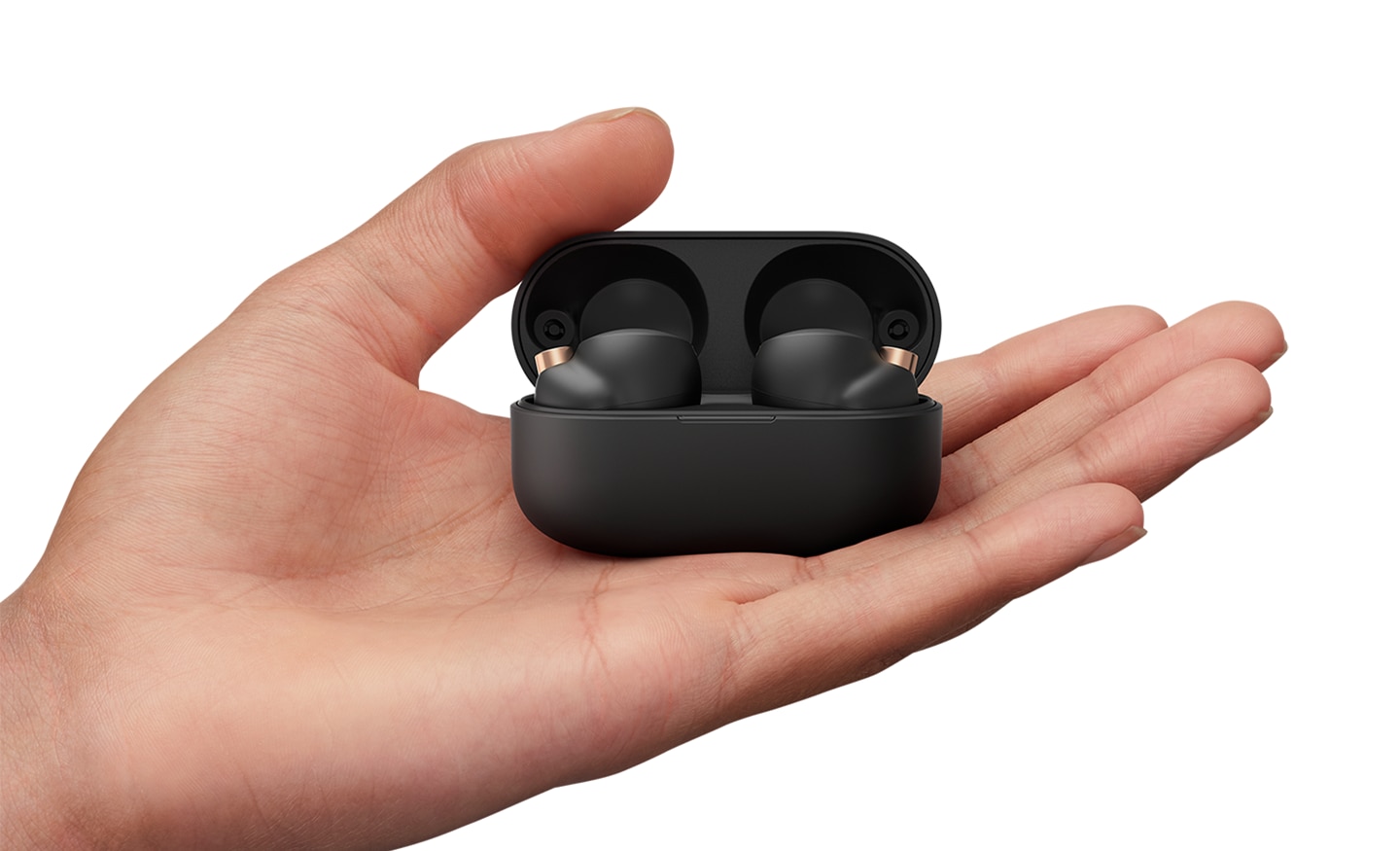
I’m also a sucker for the Lypertek brand, which punches far above its weight when it comes to performance against cost. While they have nowhere near the smart features of the AirPods Pro 2, nor the quality of their noise-cancelling powers, the Lypertek PurePlay Z5 sound amazing for just a $129 / £119 asking price – and often much lower on sale, too.
But really, if you’re buying AirPods of any description, that’s likely because you’re after the slick integration with the wider Apple product world. As such, for those that can’t stump up the change for the AirPods Pro 2, the 3rd generation AirPods are a great alternative, with similarly solid audio performance, sans the noise-cancelling smarts, for $179 / £169.
AirPods Pro 2: Should you buy them?
Buy the AirPods Pro 2 if…
You want to really block that external noise out
Apple’s new AirPods Pro 2 are among the best on the market when it comes to active noise cancellation, really working well to crush external sounds.
You want great sound without scrimping on battery life
It’s a solid improvement for the AirPods Pro 2 when it comes to overall sound quality, while managing to squeeze out more playback time per charge thanks to a more efficient H2 chip.
You’re invested in the Apple ecosystem
AirPods Pro 2 “just work” if you’ve got a royal flush of Apple devices, seamlessly switching between iPhone, iPad, Mac and Apple TV devices, and taking advantage of the interoperability of Apple’s software systems.
Don’t buy the AirPods Pro 2 if…
You’re on a tight budget
The AirPods Pro 2 are great and fairly priced given their feature set. But there’s a lot of great options at cheaper price points, too.
You crave the most detailed, lossless digital audio
Apple still hasn’t solved how to get lossless audio playing through its wireless earbuds, despite the feature being a key selling point of Apple Music subscriptions.
You have an Android phone
The best bits of the feature set here work most seamlessly with iPhones.
AirPods Pro 2: Verdict
Though on paper the changes to the AirPods Pro 2 appear small, those little tweaks and a handful of meaningful individual additions add up fast to offer a substantial improvement on an already terrific set of earbuds. The AirPods Pro 2 finally feel like they live up to that ‘Pro’ moniker, with superb audio performance and noise-canceling capabilities to match its rivals.
Where the AirPods Pro 2 earbuds come into their own is with the way they weave into the wider Apple ecosystem. Whether it’s quickly swapping between other available Apple products, personalized Spatial Audio response, smart Find My functionality, or simply dedicated settings options, they exemplify the benefits of keeping all your gadgetry locked to the Apple brand. Conversely, that makes them a little less attractive to Android users, but they, too, will benefit from the overall audio improvements here.
There are still gaps keeping them from perfection – the sooner Apple solves the lossless-over-wireless problem, the better, given the excellent catalog building on Apple Music. But these are easily the best true wireless earbuds available to Apple aficionados – and a damn compelling reason to join the flock for everyone else.
